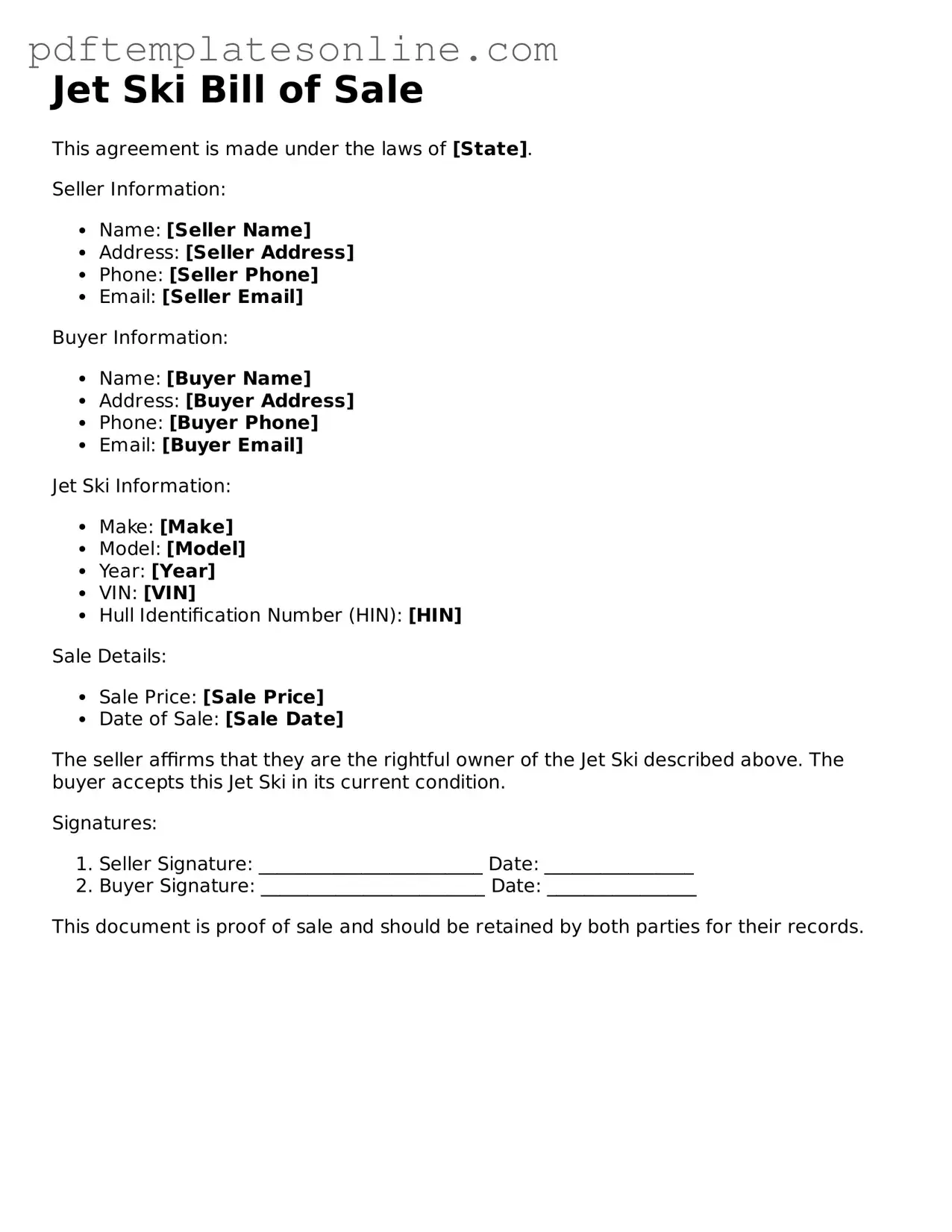When purchasing or selling a Jet Ski, completing the Bill of Sale form accurately is crucial. However, many individuals make common mistakes that can lead to complications down the line. One frequent error is failing to include the correct vehicle identification number (VIN). This number is essential for identifying the specific Jet Ski and ensuring that the transaction is legitimate. Without it, future ownership disputes may arise.
Another mistake is neglecting to specify the purchase price. The Bill of Sale should clearly state the amount agreed upon by both parties. Omitting this detail can create confusion and may complicate tax obligations later. Additionally, some individuals may forget to include the date of the transaction. This information is vital for record-keeping and can affect warranties or service agreements.
People often overlook the importance of having both the buyer and seller sign the document. A signature serves as a legal acknowledgment of the transaction. Without it, the Bill of Sale may not hold up in court if disputes arise. Furthermore, failing to provide contact information for both parties can hinder future communication regarding the Jet Ski.
Another common oversight is not including a description of the Jet Ski itself. Important details such as the make, model, year, and color should be clearly listed. This helps prevent any misunderstandings about the specific vehicle being sold. Additionally, some individuals forget to check for any liens on the Jet Ski before completing the sale. A lien could affect the buyer's ability to register the vehicle, leading to potential legal issues.
Lastly, many people do not keep a copy of the Bill of Sale for their records. Retaining a copy is essential for both parties, as it serves as proof of the transaction. This document can be invaluable for future reference, whether for registration, insurance, or resale purposes. By avoiding these common mistakes, individuals can ensure a smoother transaction process and protect their interests in the sale of a Jet Ski.
